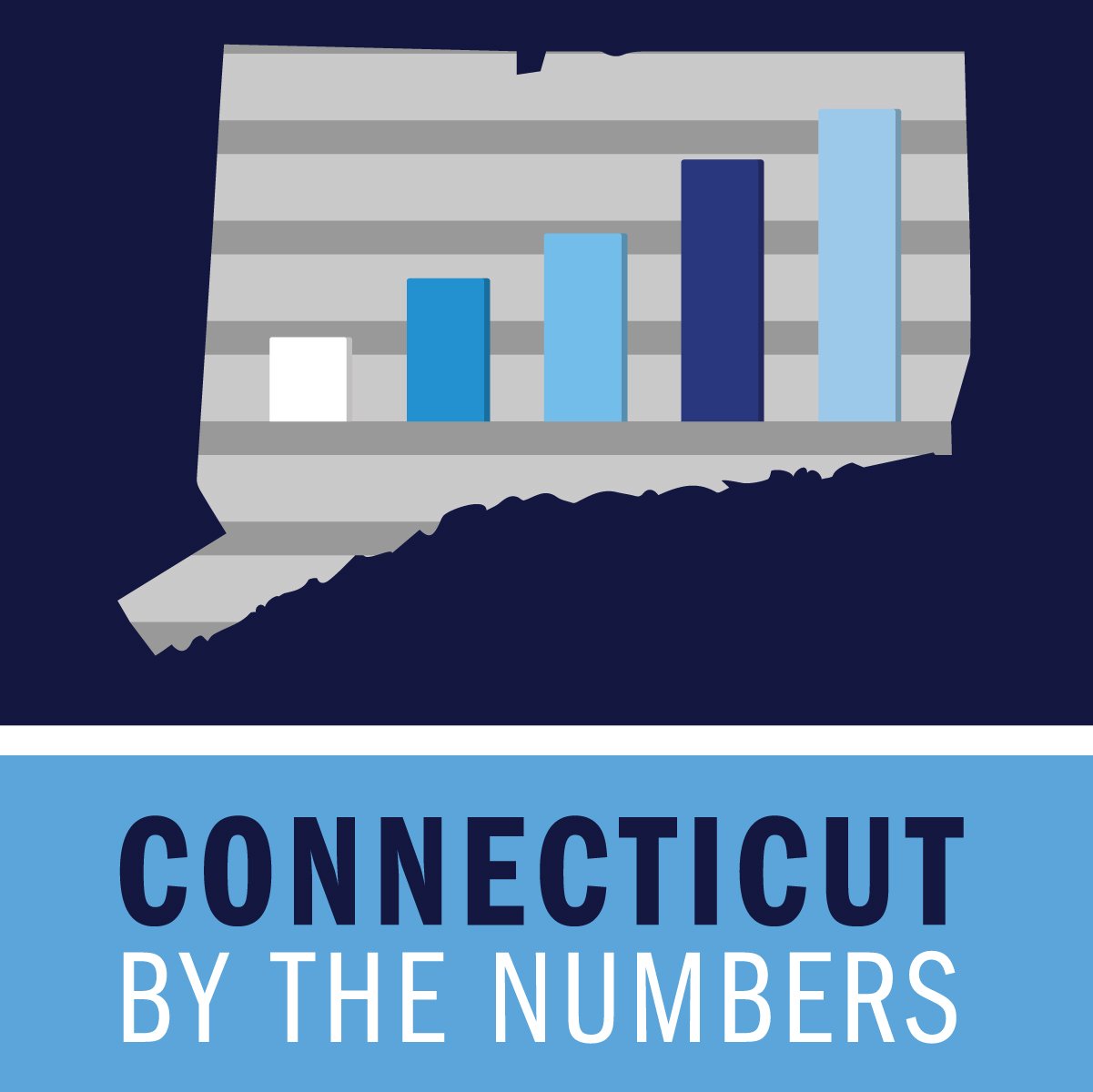Israeli Speech Communication Firm Earns $1.5 Million Investment at State's VentureClash
/An Israeli company developing “a revolutionary mobile application that translates indistinguishable speech into understandable language” won praise and the top investment award of $1.5 million in VentureClash, Connecticut's $5 million global investment challenge for early-stage companies in digital health, financial technology, insurance technology and the Internet of Things. Connecticut Innovations (CI), the leading source of financing and ongoing support for Connecticut’s innovative, growing companies, runs the annual competition.
In all, nine companies from six different countries participated in the final pitch event. VentureClash judges awarded six companies with investments, mentoring and customer introductions to help them grow and succeed. The winning companies are required to establish a presence in Connecticut.
The top placing company, Voiceitt, points out that the market for their product, in the U.S. and worldwide, is vast. In the US and Europe, a combined 10.4 million people suffer from speech disabilities, and 8 percent of all children suffer from a consistent or temporary communications disorder. (see video, below)
Voiceitt’s core mission is to “make voice recognition technology truly accessible to everyone. Our principal aims are inclusion and independence, and we are committed to helping children and adults around the world communicate freely, spontaneously, and naturally by voice.”
Through a hybrid of unique statistical modeling and machine learning, Voiceitt is working to enable “tens of millions of people to overcome communication barriers and help them connect with the world.”
Two second-place winners were each awarded a $1 million investment:
- DOZR: A Canadian company that has developed a marketplace for the online rental of heavy equipment, enabling business owners to earn additional revenue from their idle equipment and allowing contractors to rent equipment at lower rates than traditional rental companies.

- IronYun: A Stamford-based next-generation, AI deep-learning, big-data video search business-to-business software company providing enterprise customers with hyper-converged, private cloud computing and big-data video software products.

Three additional finalists were selected to each receive a $500,000 investment award:
- CloudKPI: An Irish company developing an insight engine that enables SaaS businesses to predict likely outcomes.
- Invixium: A Canadian manufacturer of modern biometric solutions for markets needing strong user authentication, convenience and data analytics.
- Paygilant: An Israeli technology company working to prevent mobile payments fraud on mobile
 devices in the preauthorization phase.
devices in the preauthorization phase.
The finalists pitched their ideas in front of a live audience and a panel of judges at the Yale School of Management in New Haven on October 18. The other finalists were:
- Kasko: A London-based digital insurance intermediary bridging the gap between the digital and insurance economies.
- Panoply: An Israeli startup developing a smart data warehouse, using machine learning and natural language processing to automate data integration, data management and query optimization.
- SnapSwap: A Luxembourg-based company offering white-label end-to-end know-your-customer (KYC) services for financial institutions and businesses.
“The VentureClash competition continues to introduce some of the world’s most innovative and promising early-stage companies to all that Connecticut has to offer,” said Matt McCooe, CEO of CI. “From the initial application period through to the finals, we were so impressed with the caliber of leadership and the depth of innovation represented by the companies involved in the competition. We thank them for their efforts and commitment and look forward to working with the companies to help them make Connecticut a center point of their growth strategy.”
 The VentureClash competition started with applications from 300 companies from more than 15 countries. After two rounds of judging, nine finalists were named, and they then went on to compete at the live pitch event. The judges included investors and subject-matter experts from Greycroft Partners, Oak HC/FT, Real Ventures, Stanley Ventures, Teamworthy Ventures, Travelers and the Royal Bank of Scotland.
The VentureClash competition started with applications from 300 companies from more than 15 countries. After two rounds of judging, nine finalists were named, and they then went on to compete at the live pitch event. The judges included investors and subject-matter experts from Greycroft Partners, Oak HC/FT, Real Ventures, Stanley Ventures, Teamworthy Ventures, Travelers and the Royal Bank of Scotland.
Event partners and sponsors included Aetna; aventri; Bernstein; Boehringer Ingelheim; Diameter Health; Disruptive Technologies; Elm Street Ventures; FML; Harman; Hartford Healthcare; Magellan Health; MasterCard; Medtronic; Nassau Re; NatWest Markets; Payflex; Pitney Bowes; Health Venture; ISG; Stanley, Black & Decker; startlab powered by Bank of Ireland; The Hartford; Shipman & Goodwin; Sikorsky Innovations; Synchrony Financial; Teamworthy Ventures; Travelers; Updike, Kelly & Spellacy; Voya Financial; Webster Bank; Yale University; and Yale University’s Office of Cooperative Research.
https://youtu.be/6-rng3rGYws



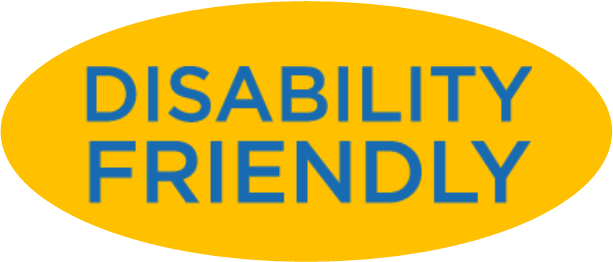 The personal-finance website WalletHub compared the largest U.S. cities – including at least two from each state - across 31 key indicators of disability-friendliness. The data set ranges from wheelchair-accessible facilities per capita to rate of workers with disabilities to quality of public hospital system. The 31 indicators were grouped into three categories: Economy, Quality of Life and Health Care.
The personal-finance website WalletHub compared the largest U.S. cities – including at least two from each state - across 31 key indicators of disability-friendliness. The data set ranges from wheelchair-accessible facilities per capita to rate of workers with disabilities to quality of public hospital system. The 31 indicators were grouped into three categories: Economy, Quality of Life and Health Care.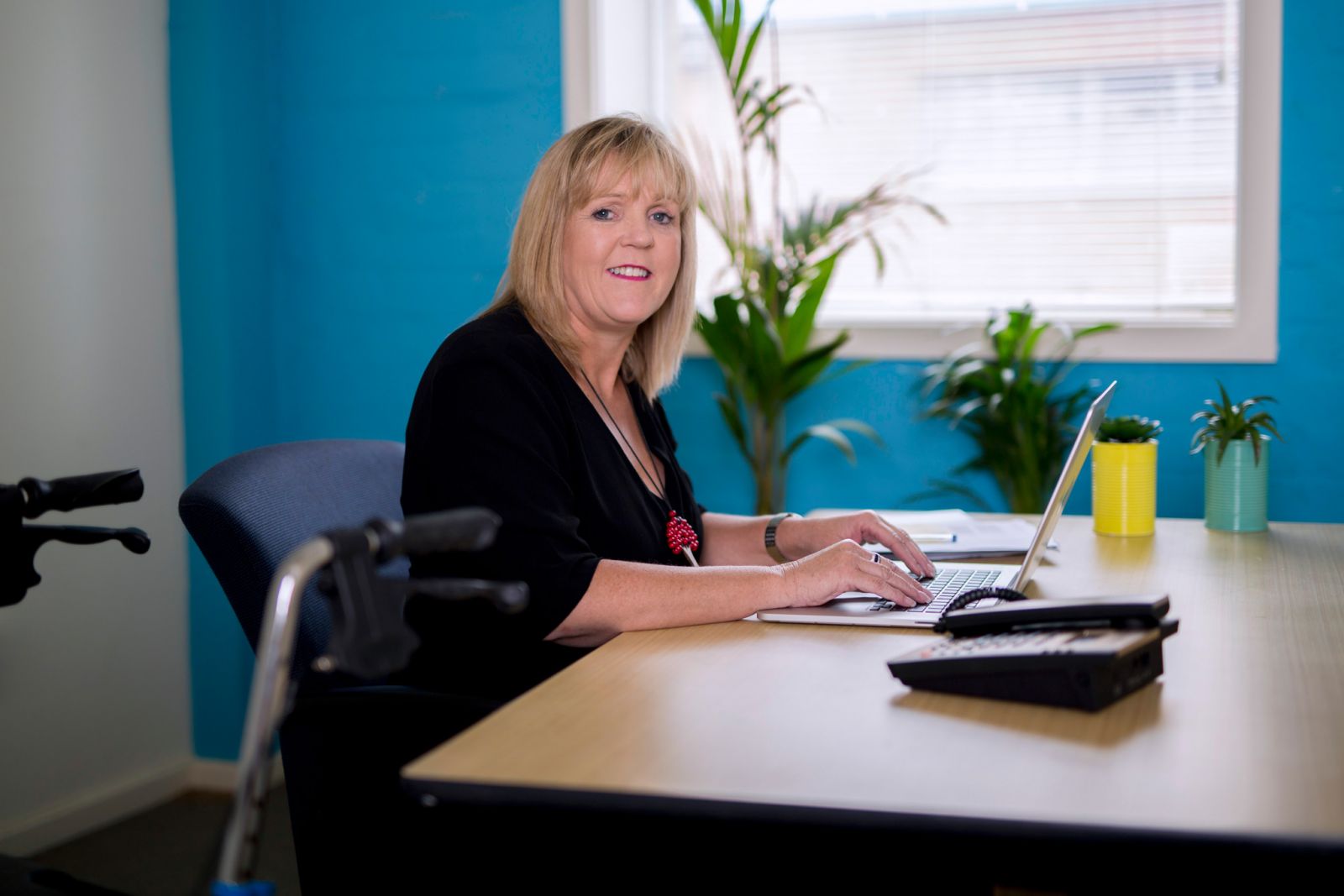
 “Bridgeport has one of the lowest number of wheelchair accessible art, entertainment and recreational establishments per capita, and a large number of older buildings with little to no access for disabled residents," Gonzalez said.
“Bridgeport has one of the lowest number of wheelchair accessible art, entertainment and recreational establishments per capita, and a large number of older buildings with little to no access for disabled residents," Gonzalez said.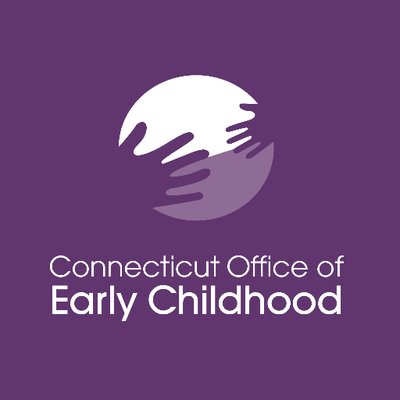
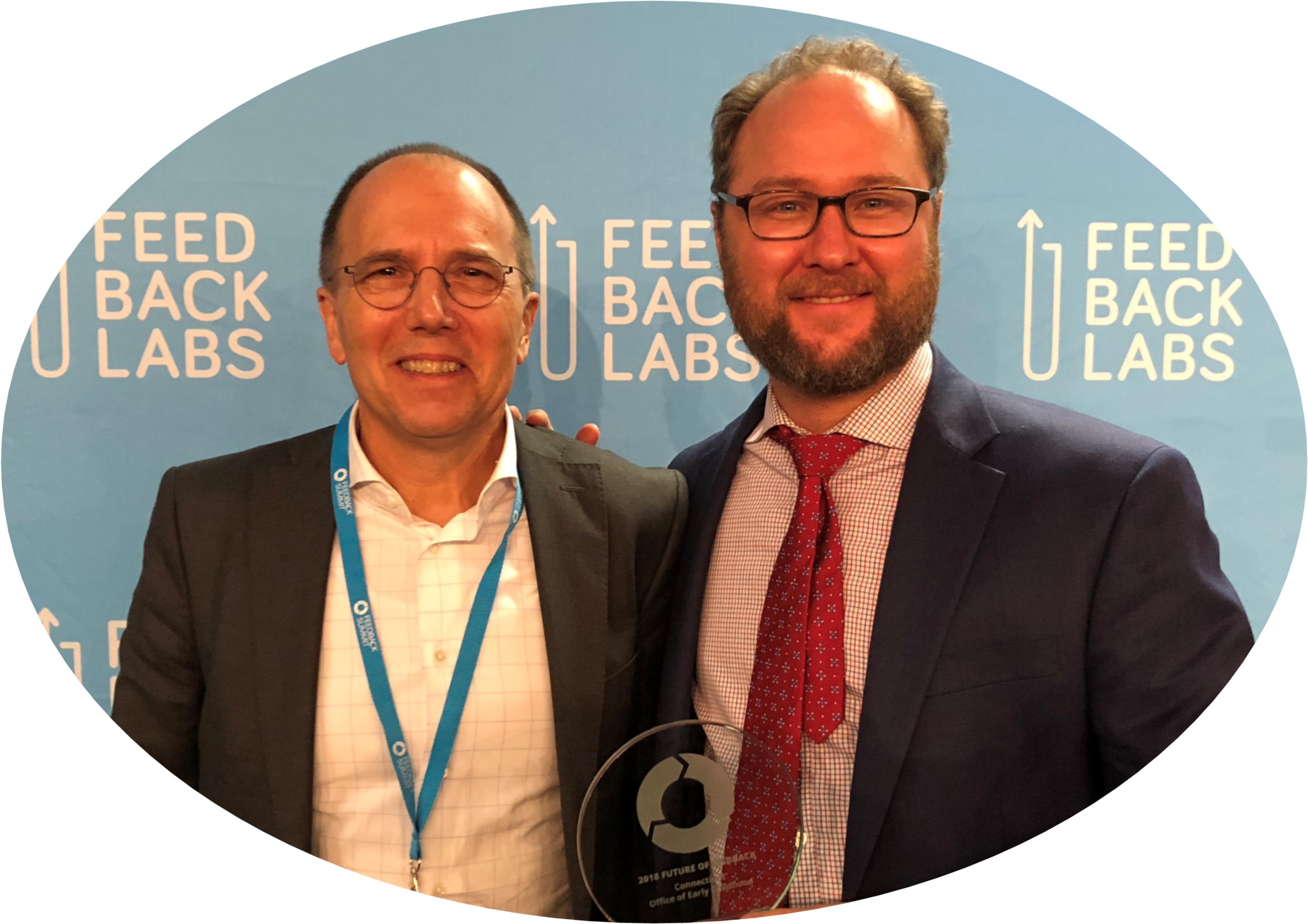 Among the 10 largest state agencies in Connecticut, OEC’s goal is to keep the state’s children safe, healthy, learning and thriving. Through its innovative feedback efforts, the agency is acting on evidence that engaging providers and parents in policymaking yields better results. Officials said that the agency combined data from 1,700 family surveys, another survey shared with all providers in the state, and 400 community and provider meetings in order to build a draft plan to transform the ECE system in the state, which serves 200,000 children.
Among the 10 largest state agencies in Connecticut, OEC’s goal is to keep the state’s children safe, healthy, learning and thriving. Through its innovative feedback efforts, the agency is acting on evidence that engaging providers and parents in policymaking yields better results. Officials said that the agency combined data from 1,700 family surveys, another survey shared with all providers in the state, and 400 community and provider meetings in order to build a draft plan to transform the ECE system in the state, which serves 200,000 children.


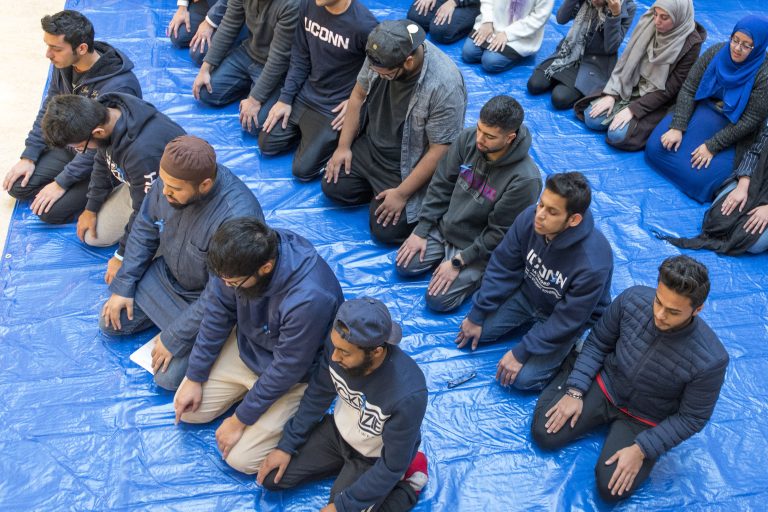
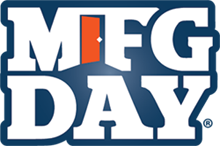
 Marion Manufacturing Company, located in Cheshire, will offer visitors a “first-hand look at manufacturing in today’s high tech world.”
Marion Manufacturing Company, located in Cheshire, will offer visitors a “first-hand look at manufacturing in today’s high tech world.” 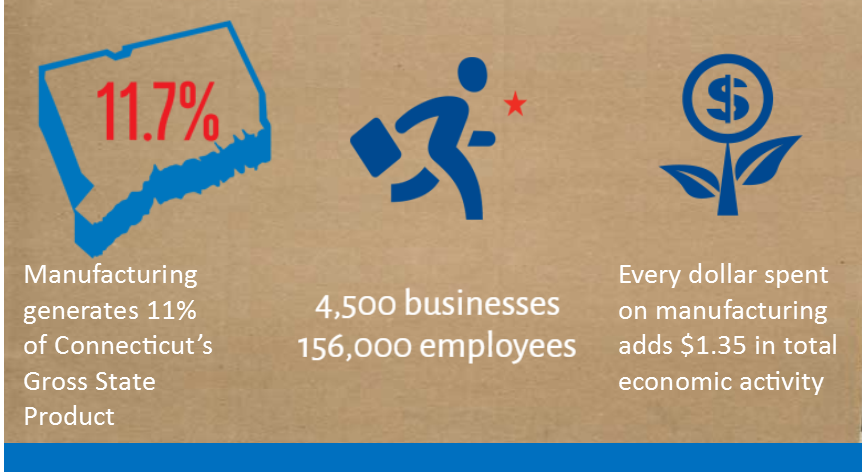
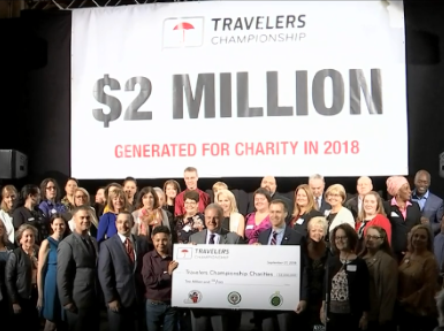 e the community a better place.”
e the community a better place.”


 Just over a decade later, her business acumen and history of public service put her on a ticket for statewide office. In 1990, New Haven-area Congressman Bruce Morrison won a primary to be the Democrats choice for Governor, former U.S. Senator Lowell Weicker started his own political party to launch is comeback with a candidacy for Governor, and Republicans nominated another Congressman, John Rowland of Waterbury.
Just over a decade later, her business acumen and history of public service put her on a ticket for statewide office. In 1990, New Haven-area Congressman Bruce Morrison won a primary to be the Democrats choice for Governor, former U.S. Senator Lowell Weicker started his own political party to launch is comeback with a candidacy for Governor, and Republicans nominated another Congressman, John Rowland of Waterbury.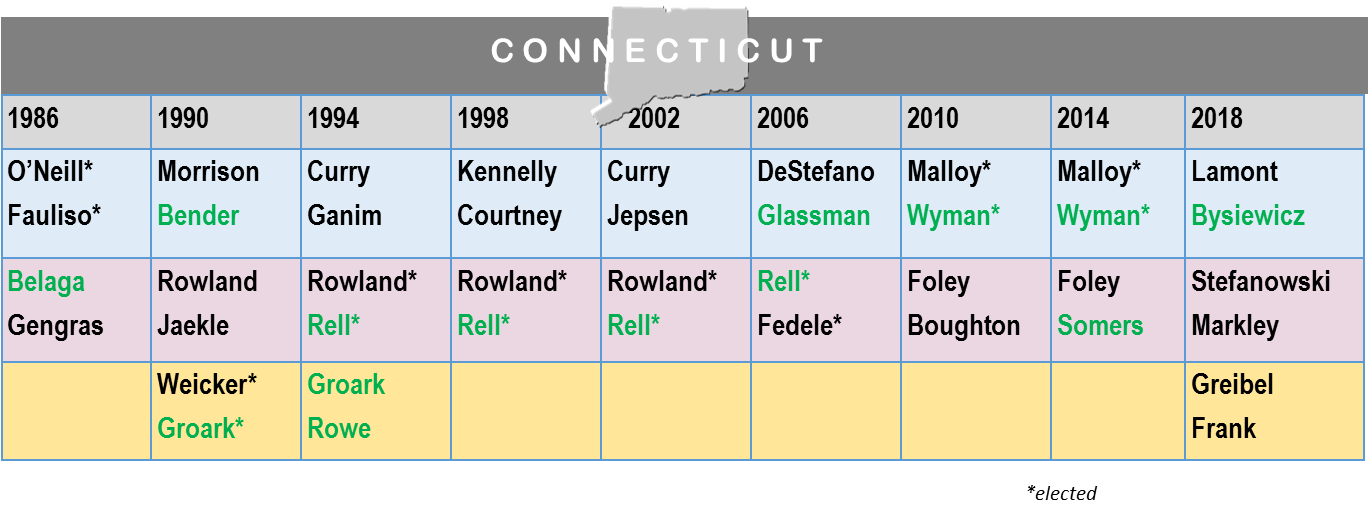
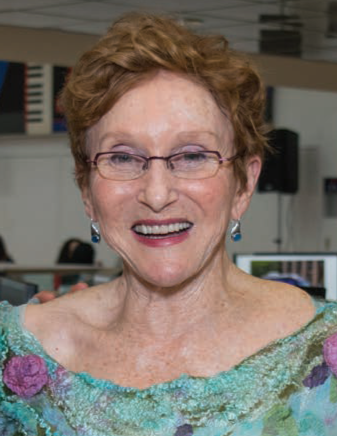 She is also remembered as the Democratic candidate the first time two women were on the November ballot for Lieutenant Governor of Connecticut. That occurred again in 1994 and 2014. At least one woman has been a candidate for Lieutenant Governor or Governor - or both - in every election cycle since 1986, and Connecticut's voters elected Nancy Wyman to serve as Lieutenant Governor in 2010 and 2014, following one term of a man in that role, the only such term since 1990. This year, Susan Bysiewicz is on the ballot for that office. A woman has been elected either Governor or Lieutenant Governor in Connecticut in every election since 1990.
She is also remembered as the Democratic candidate the first time two women were on the November ballot for Lieutenant Governor of Connecticut. That occurred again in 1994 and 2014. At least one woman has been a candidate for Lieutenant Governor or Governor - or both - in every election cycle since 1986, and Connecticut's voters elected Nancy Wyman to serve as Lieutenant Governor in 2010 and 2014, following one term of a man in that role, the only such term since 1990. This year, Susan Bysiewicz is on the ballot for that office. A woman has been elected either Governor or Lieutenant Governor in Connecticut in every election since 1990.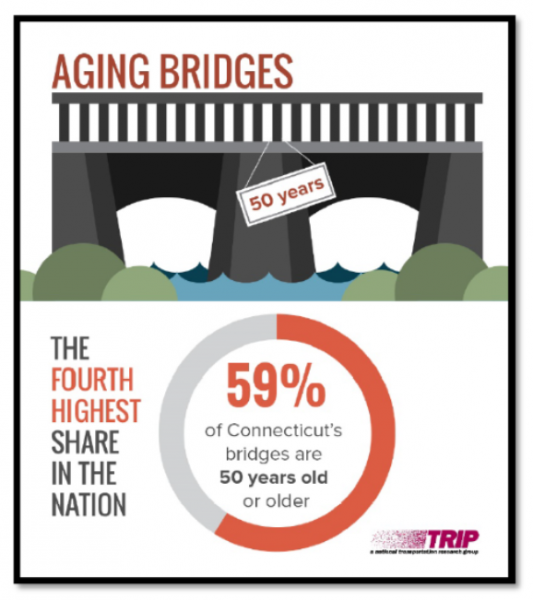 Yesterday, it was announced that 59 percent of Connecticut’s more than 4,000 bridges are 50 years or older, the fourth highest rate in the nation. The average age of all Connecticut’s bridges is 53 years, while the average age of the state’s 308 structurally deficient bridges – seven percent of the total - is 69 years. Structurally deficient bridges in Connecticut are crossed daily by 4.3 million vehicles.
Yesterday, it was announced that 59 percent of Connecticut’s more than 4,000 bridges are 50 years or older, the fourth highest rate in the nation. The average age of all Connecticut’s bridges is 53 years, while the average age of the state’s 308 structurally deficient bridges – seven percent of the total - is 69 years. Structurally deficient bridges in Connecticut are crossed daily by 4.3 million vehicles.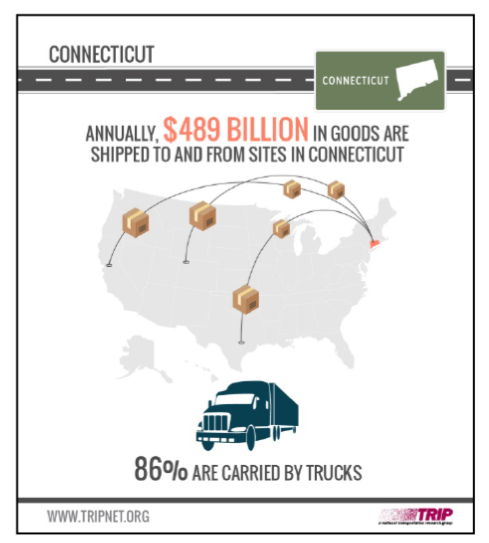 The report also noted that “annually, $489 billion in goods are shipped to and from sites in Connecticut, largely by truck,” adding that “approximately 731,000 full-time jobs in Connecticut in key industries like tourism, retail sales, agriculture and manufacturing are completely dependent on the state’s transportation network.”
The report also noted that “annually, $489 billion in goods are shipped to and from sites in Connecticut, largely by truck,” adding that “approximately 731,000 full-time jobs in Connecticut in key industries like tourism, retail sales, agriculture and manufacturing are completely dependent on the state’s transportation network.”























